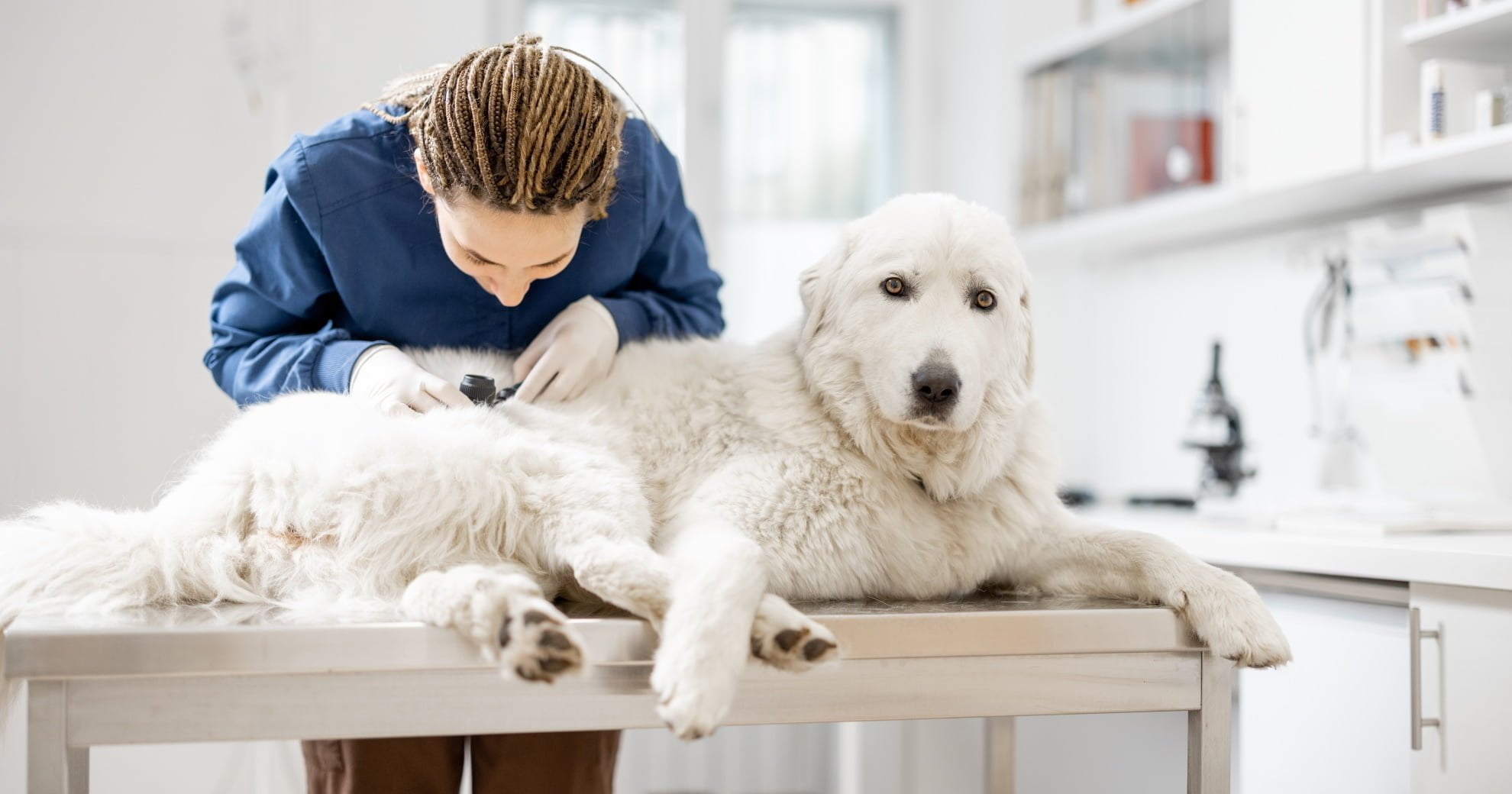HEALTH & WELLNESS

TRENDING

SIGN UP and Start Receiving
Our Monthly Newsletter,
The Chronicles
Caring For Your Dog’s Skin

Most dog owners know that keeping your pet in great condition starts with proper nutrition. But after that, sensible skin care can also make the difference between your dog being happy or miserable.
Here we describe some of the most common skin afflictions and the preventatives and treatments available to deal with them.
Fleas: Anyone who has seen their poor pooch desperately scratching to relieve the itching caused by flea bites knows what torment is. It’s even more frustrating when a dog loves lounging in special hidey holes outside the house. These are often ground zero for flea infestations and unless you deal with them there, the misery will eventually resume. In the meantime though, many excellent oral and dermally applied treatments can be employed to relieve the symptoms by killing the fleas already on your dog’s body.
Doggy Dandruff: This is an unsightly but painless condition. Don’t let that be a reason to avoid treating it because it is a symptom of potentially more serious underlying problems. Typical causes are allergies and dietary deficiencies that cause dry skin or an excess of natural skin oils. Before taking more drastic steps like seeking professional help, add omega-3 fatty acids easily obtained in fish oils to your pooch’s diet. Back this up with some extra brushing and in many cases, this will be sufficient treatment to get the problem under control.
Mange: Despite your efforts to provide the best care, your dog may pick up one of the two types of mange-causing mite species. The first and most likely is an outbreak of demodectic mites. These occur naturally in a pup’s hair follicles and are passed on from the mother at birth. However, certain conditions such as a compromised immune system can cause them to multiply out of control.
The second kind, sarcoptic mange, is harder to treat and much more uncomfortable because the itching is intense. This kind of mange requires specialized treatment to kill off the mites and prevent them from re-establishing themselves. Special care is required to stop the transmission of mites to other pets.
Lupus: An autoimmune disease, lupus occurs when the body’s own defence system begins to attack it. This leads to the destruction of a subcutaneous cell layer. The symptoms include scabbing and ulceration, particularly around the nose, mouth, and eyes. The treatment of veterinary patients with this disease requires the aggressive suppression of the immune system and can only be undertaken by a qualified doggy doctor.
Ringworm: This affliction is very common among humans and their pets. It is caused by three types of fungus known as dermatophytes (from the ancient Greek for skin and plant). The resulting condition is known as ringworm because the circular pattern of the raised skin resembles a nasty critter curled up beneath the skin. Fortunately, this is not the case and the unsightly affliction is often treated at home using anti-fungal remedies like apple cider vinegar, lemongrass oil, and others. If this fails, your veterinarian will recommend a suitable medication. Keeping your dog clean and dry will help contain the fungus from spreading to other parts of the body and other pets. Provide clean bedding regularly and don’t let them share food and water dishes with their four-footed housemates.
Use rubber gloves when handling a dog with a skin disorder. This will help prevent contact with the exposed skin or pathogens that can be spread to other animals, including humans. Use a disinfectant when you wash your hands after treating your pet.
Make an effort to groom your dog regularly, using a soft-haired brush and clean fingers.
Last but not least, to build up a resilient immune system make sure that your dog’s diet is complete and balanced.
The advice in this post is provided for informational purposes only and is not professional medical advice. To have your pet’s condition accurately diagnosed kindly see your veterinarian.
Related Articles













